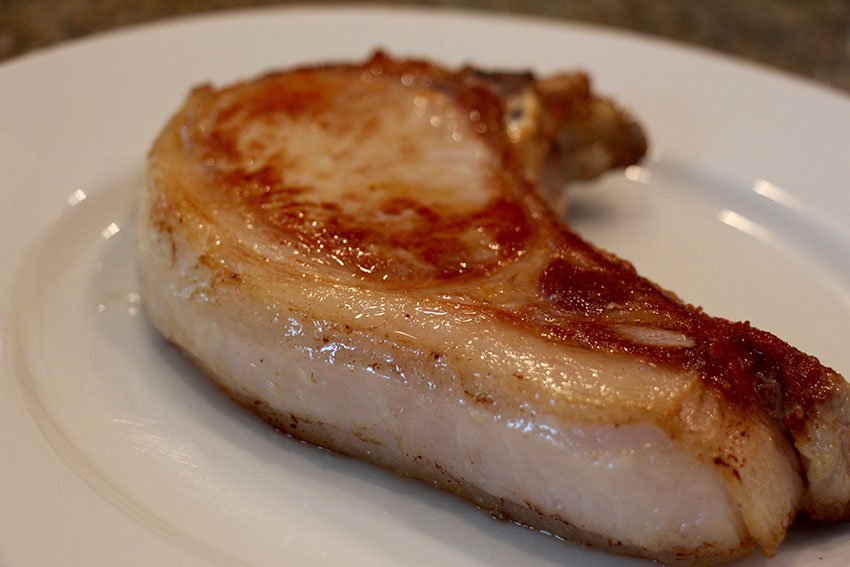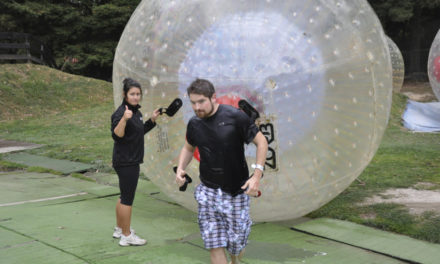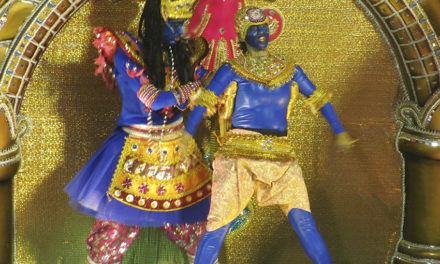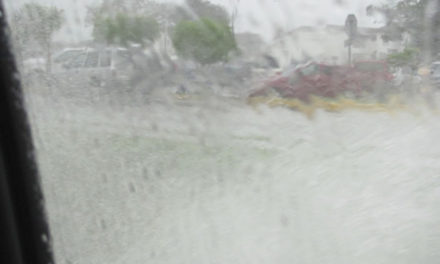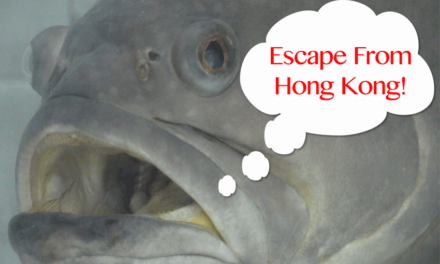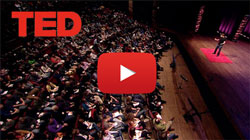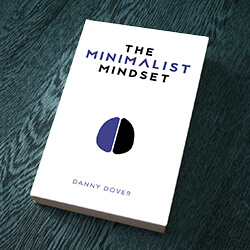I am a both a meat eater and an animal lover. Intellectually, I understand what happens between farm and fork but before last week I hadn’t had any first-hand experience in the raising, killing and butchering of the animals that I ate. With this Life List item, I faced this cowardice head-on.
The single most fulfilling intellectual exercise that I do is actively testing my long held assumptions. Each of us lives in a world that changes constantly and we occupy bodies that change just as fast. Unfortunately, our minds don’t always adapt to our changing conditions. In order to make up for this weakness, I periodically take a solid belief of mine and actively test it to see if the given assumption still holds true for me.
This process has resulted in me reversing my belief in free will (I don’t believe in it anymore), strengthening my beliefs about gun ownership (I believe gun control should be more like American voting rights. After fulfilling minimum requirements any one can earn the right but you instantly lose it if you make bad decisions) and last month, this mental exercise drastically changed my views on the morals of eating animals (my new point of view will likely surprise you).
On Eating Animals
I have spent two years passively working on this particular Life List item. I eat meat and I care deeply about animals. Unfortunately, this created a division in my life that I saw as cowardly. I knew I wanted to face going through the whole process of spending time with an animal and then killing, butchering and eating it but I didn’t want to walk into the situation lightly. I care a lot about animals and don’t want to treat them unethically even when doing them harm. Dozens of times I looked into options for doing this. Each time, it didn’t feel right.
This changed last month when I found Farmstead Meatsmith. These butchers were different. They were highly intellectual, local and ethical. They emphasized using every piece of the animal for eating and clearly cared about both the well-being and the taste of the animal, an interesting combination.
Two weeks ago, I boarded a ferry, slept in a tiny motel and woke up early to go kill my first mammal.
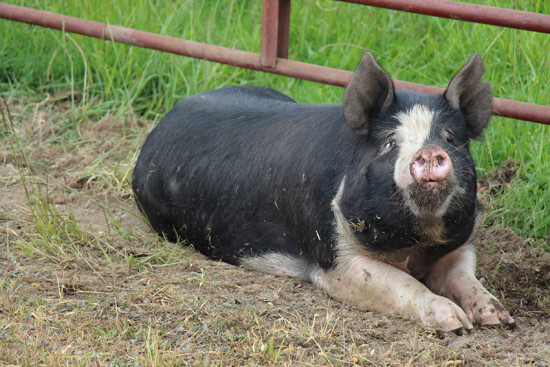
The Kill
Early in the morning, I met with a local farmer and his girlfriend. They had spent the previous nine months raising the animals that we would be eating.
After making some small talk, we approached the pig pen. The pigs were not interested in us. Instead, they wanted food and sleep. They were clearly aware of us and each other but were disinterested in our company.
The farmers had hired Farmstead Meatsmith to show them how to humanely slaughter and butcher their animals. We spent a long time chatting with the butcher and interacting with the pigs. Much like when I went hunting, I realized that butchers, the people who studied and spent time with the animals, were also the most humane. If interacting with animals is your craft, even if this interaction involves killing them, it is extremely difficult not to learn to respect them. It is this respect for craft and the animals that separates small town farmers and butchers from large corporate food factories.
The butcher explained his killing process. Instead of forcing the animal into a tiny area to keep it from moving, he would offer it some food and patiently wait for the ideal shot. Rather than using a bolt which required harnessing the animal, he would be using an exploding bullet which would destroy the brain of the pig instantly. There would be no time for the pig to feel pain, it would just be lights out after one shot. He warned that the key to a humane death was patience and that waiting for the best shot could take up to 45 minutes. He wanted the death to occur instantly, taking a second shot was not a reasonable option.
He approached the pigs and noted which one came to him first. He told us that this was the more submissive pig (the dominant pig waited for him to approach) and that it was actually better to kill the more submissive pig earlier as it would get incredibly anxious if we killed its dominant partner first and it was forced to be alone.
We spent a lot of time with the pigs. We watched the pigs interact with us and each other. Their social behavior and mannerisms were fascinating. There was clearly a leader in the group and they most definitely relied on each other for protection. They were intellectually able to solve simple puzzles (like opening a gate latch) and clearly had unique personalities.
We got to know the pigs and discussed with each other what it meant to eat meat and what it meant to be a modern farmer.
The shot itself was quick and tidy. The farmer hit the brain on the first shot. Instantly the pig seized up. The death was so fast that there was not even enough time for the pig to inhale. Click-boom, lights out. There was very little blood and no reaction from the other pig.
The farmer very quickly stabbed the major artery in the pig’s neck and neatly bled out the animal. The whole killing process took less than a minute. Interestingly but uncomfortably the body of the pig continued to twitch and convulse for an additional minute. A doctor and scientist in our group said that humans do the same thing after fatal head injuries. The brain is gone and in reaction the muscles fire blindly. The farmer echoed that this happened in other animals on the farm as well. This was not behavior you see in the movies. It was uncomfortable but it was real.
After the teacher shot the first pig, it became clear that I had been underestimating the intelligence of the pigs while overestimating how human they were.
After the first pig died, the sibling pig showed no sign of interest, much less empathy or remorse. It seemed to be aware of its dead brother but didn’t seemed surprised or upset about the new situation. Instead, the other pig ignored his dead brother and waited for us to haul away the carcass. As soon as we did that, he eagerly walked over to lap up the warm blood on the ground. The pig could solve simple puzzles but lacked the brain capacity to feel anything more than simple emotions.
The Butchering Process
We carried the warm carcass to a mobile butchering truck and started the animal cleaning process. Our mission was to use every ounce of the pig for food.
I had assumed that butchery was a complex art that required nuanced knowledge of anatomy and hard earned knife skills.
Instead, I was reminded that necessity had given birth to butchery. It was created by men and women who had little time, even fewer specialized tools and big families to feed. There might be highly orchestrated butchers but the skills I learned were rather straightforward. The best knife was a sharp one and every cut was done for the purpose of making preservation or cooking of the meat easier. The blueprint was less driven by the pig’s physiology and more by the shape of pots and ovens. As my friends and I cut the pig into recognizable pieces (pork chops, ribs, tenderloins) the entire puzzle finally started to materialize in my head. I was finally experiencing and understanding the transformation from living animal to meal.
I had chosen my instructor due to his outspoken dedication to not wasting any part of the pig. I did this both for ethical reasons and for historical accuracy (before our current society of plenty, people used to put great emphasis on maximizing the food from animals.) Whereas commercial slaughtering houses use 40-60% of the dead weight of the animal, we were using nearly 100%.
At first I was impressed by how clean the slaughtering and butchering was. When I make even a small cut anywhere on my body, blood comes out to fill the hole. From that experience, I had expected the insides of the animal to be blood filled and dirty. Instead, the inside of the pig was more like a well designed machine.
Each bone, organ and muscle served a specific purpose and was mostly self-contained. We had bled the animal out in remarkably quick fashion (less than a minute) and even still it surprised me that there was very little blood left in the body (although the big exception to this was the head).
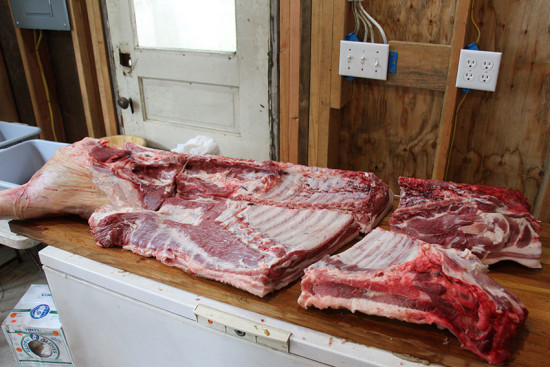
As we extracted each part of the pig, we discussed the bodily purpose and food options for each bone, organ and muscle. Again, I was surprised by how clean the process was.
This changed quickly as we got to the torso of the pig. With my arm shoulder deep in the carcass, I was instructed to remove the trachea through the midsection of the pig. The instructor said that while I wouldn’t recognize much at first but I would know I was holding the trachea when I felt somewhat that felt like my own throat. He was right. It was then that I caught the stench of the internal organs. They were not bloody as I had imagined but they were certainly rancid smelling.
The main reason that I picked a pig to slaughter rather than another animal was that a pig’s anatomy is remarkably similar to my own. With the big exceptions of the brain and the stomach, most of the major organs of a one year old pig are strikingly similar to that of a 30-year-old human male. This is the reason why we can replace human hearts with pig hearts but we can’t do the same with dog hearts.
It was important for me to go through the entire process with an animal that was similar to me. I eat meat and I want to take responsibility for my decisions. My decisions do have an impact on others and I want to feel that weight.
The similarities between the pig’s body and my own meant that our butchering of the pigs was the best and most useful anatomy class that I have taken part in. As we examined the internals of the pig, I learned an incredible amount about my own body.
I was surprised to learn that the bladder, rectum and kidneys were essentially odorless. If anything, the parts that I expected to smell the worst, smelt the most like sweet flowers. (Specifically the inside of the bladder smelt remarkably like a newly bloomed rose.)
This was not the case for everything. The liquids that lubricated the intestines and liver were rancid and quite pronounced. I quickly learned that sterile does not always mean odorless.
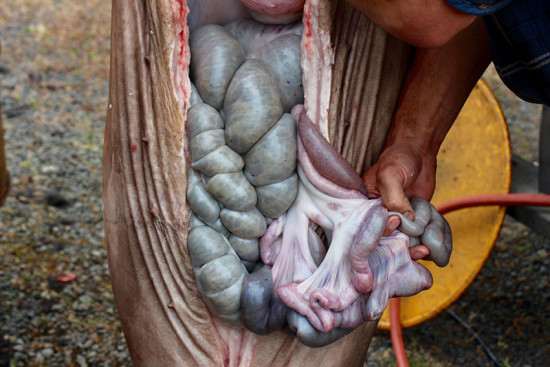
I was especially surprised by the weight and texture of the lungs. Whereas I had expected rubbery balloon like structures, I found something that was more reminiscent of memory foam. In blowing into them I was surprised to see that unlike a balloon, lungs don’t expand uniformly, rather they expand via a growing number of small sub-pockets.
I was also surprised and impressed with the durability of the various organs and arteries. At first, I was very much worried about puncturing the bladder and getting peed on. As I gained more experience, I learned that this wasn’t a realistic threat. Without the aid of a knife, all of the organs and major arteries were extremely difficult to puncture (which is of course a good thing). The inside of the pig was almost as durable as the outside. That made me feel a lot better about my own body.
Lastly, I was extremely surprised by the size and composition of the pig brain. While nearly every other organ in the pig was the same size as my organs, the brain was comically small (smaller than a single one of my fists). It was readily apparent that the pig was not biologically equipped to have high level brain functions. It’s brain was closer to that of a bird than a human.
After the butchery class, I took one of the pork chops home and prepared it for dinner. I did a small ceremony thanking the pig and took a moment of silence to think about all that goes into eating meat. As I cooked it, I thought about the farmers, the day to day lives of the pig, the butcher and where the pork chop I was about to eat existed on the pig that I had helped kill.
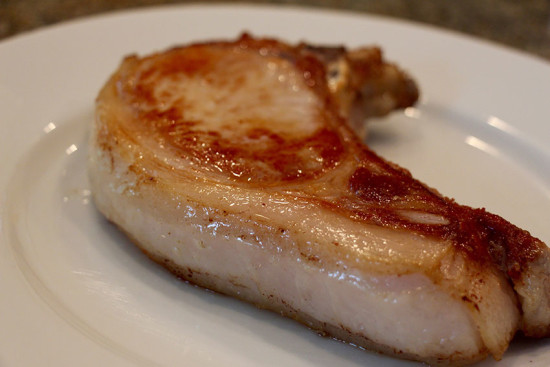
A New Worldview
As expected, actively participating in the process of going from a live animal to a cooked meal did irreversibly change me. That change, however, was not what I expected.
Having gone through the experience, I now care more about what I eat but this is not due to my fondness for animals. My caring actually comes from somewhere quite opposite, somewhere more selfish. I now feel more distant from animals.
Pigs and all animals are now more foreign to me. I experienced first-hand how different their brains are from humans and saw the limits this puts on their experience of the world. Pigs do not experience the world like you and I do, they simply experience it like pigs. I thought about the emotionless pig seeing fuel and lapping up the blood of its brother without any feeling or indication of remorse.
I believe that all mammals can feel a limited amount of emotions and feelings. Fear, pain, connection to ones parent, sexual lust and curiosity are all feelings and emotions that are necessary for evolution. (A creature needs to be able to feel pain in order to avoid things that will injure it, likewise a creature needs to experience sexual lust in order to be driven to mate.) These emotions help a species survive and enable reproduction. As such, even relatively simple brains (brains lacking a neocortex) can facilitate those necessary emotions. But that is where I think most mammals hit their emotional complexity limit.
I no longer believe that mammals like pigs, cows, dogs or cats can feel higher level emotions like empathy, passion (in the non-sexual sense) or wonder. They simply don’t have the capacity to comprehend those emotions and feelings. They can experience a connection with a human that protects and provides for them (in exactly the same way that they would connect with their biological parent) but that doesn’t mean they spend their days wondering about the ambitions of their human companions. Instead, I believe these mammals spend their days transitioning between experiencing various levels of simple evolutionary driven feelings and sensations like hunger, thirst, companionship and sexual lust.
It seems to me that dogs and cats are interesting cases here. As humans, we have bred them specifically for behavior that resembles loyalty and affection. While these specific animals may be closer to humans in their capacities to experience these particular emotions, they are still not comprehending the world like you and I do. Although ahead of most mammals, dogs and cats are still severely limited in their ability to experience the world in any way that is similar to a human. (Dolphins and chimpanzees may be interesting exceptions here.)
In the mammal world, a mother is something that gives birth and (depending on the species) helps keep a given animal alive by providing it with food, water and shelter. That is similar to humans. But that is where the similarities end. To a non-human mammal, a sibling (like the two pigs) are considered non-lethal competition. They compete for food but usually don’t actively fight each other. Understanding this helped me better tune my mental model of how other mammals experience life. They are not emotionless but they are also not human.
Before doing this Life List item my mental model of non-human mammals was like that of how I mentally envision the life of a human baby. While a human child isn’t currently capable of comprehending the world like me, I understood that as he or she continues to grow, they will one day experience the world like I do. A smile from a baby doesn’t mean exactly the same thing as when I smile but it does come from the same place. A baby is inexperienced but not incapable of feeling a large breadth of emotions.
This is fundamentally different from my new mental model of other mammals. Other mammals are both inexperienced and lack the capacity to feel complex emotions. As they spend more time in the world they can gain experience but they will never be able to experience additional complex emotions. From an emotional and complex thought perspective, their lives are black and white while more advanced animals are in various degrees of emotional color.
Whereas humans spend their days daydreaming, communicating with others and imagining alternative scenarios of real life events, other mammals spend their days more like passengers driven by relatively simple and evolutionarily necessary feelings and needs like hunger, thirst and protection driven companionship. They can feel satisfied by a meal but they can’t comprehend the beauty of a sunset.
Empathy is feeling the same emotion that is being felt by another being simply because the other being is feeling it.
This is where I now feel less connected with animals. I do not believe that they can feel the same way I do and therefore I now have less of an empathic relationship with them. While I certainly do not want to see needless harm happen to any creature, I now see non-human mammals more like a mechanical entity than an enlightened being.
Surprisingly after completing this Life List item, I now care less about eating animals and more about the mechanics and requirements of my own body.
My new worldview is selfish for sure, but evolutionary sound.

